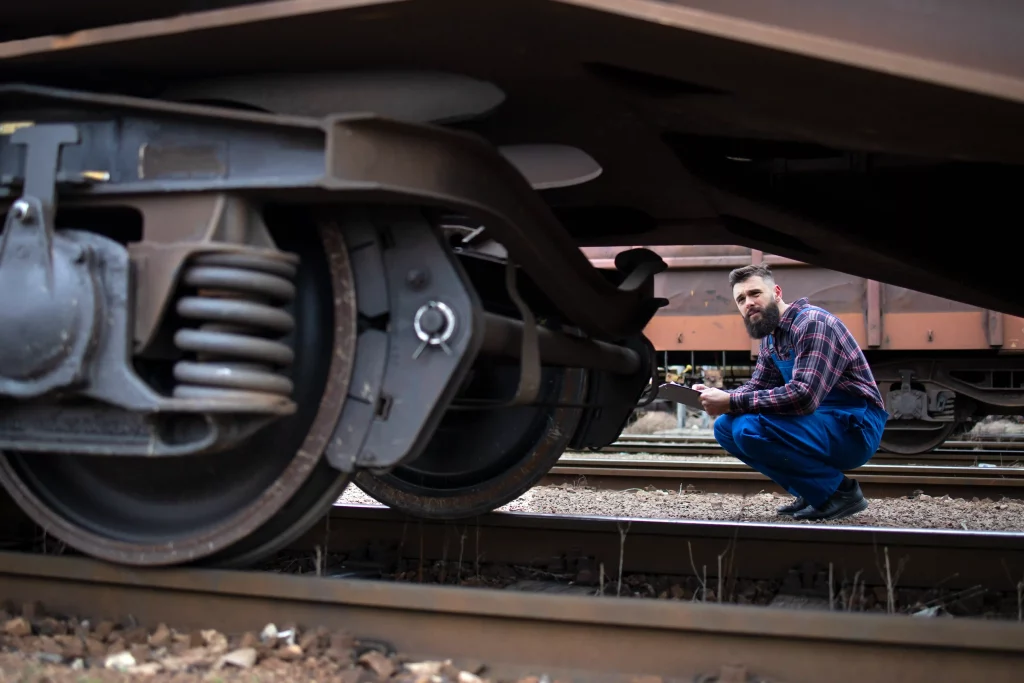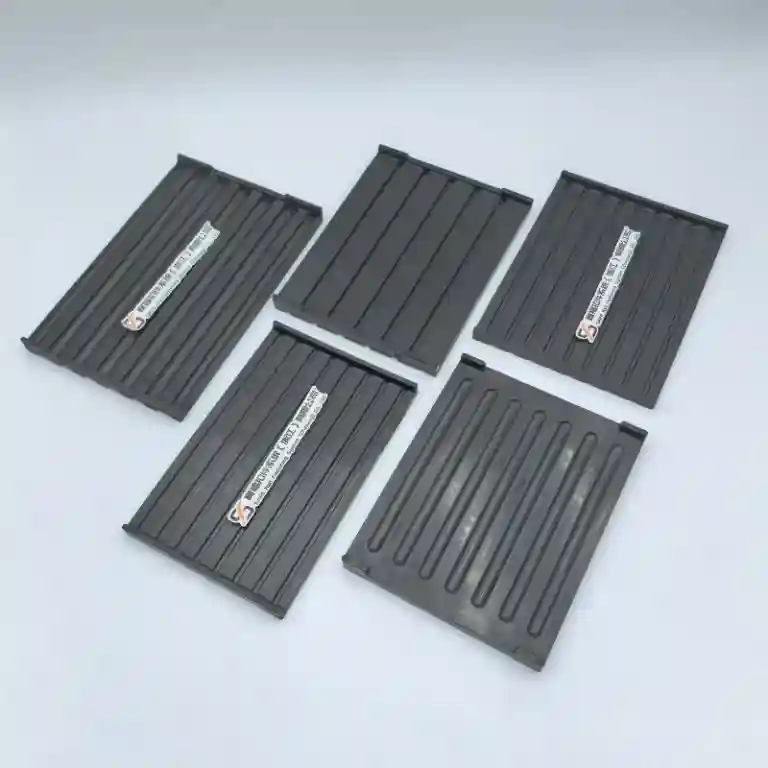Railway systems heavily rely on rubber rail pads to maintain stability and performance levels effectively and efficiently. Learning about their makeup, functionality, and upkeep needs is essential, for prolonging their longevity. To avoid harm and enhance productivity, it’s crucial to grasp the importance of proper maintenance.
What Are Rubber Rail Pads and Their Functionality?
In conversations about the elements of a railway system’s infrastructure, rubber rail pads frequently take the stage for their vital function in preserving the strength and operational effectiveness of railroads. Despite their simplicity, these pads serve a diverse purpose in guaranteeing the smooth and effective operation of trains.
Composition and Material Properties of Rail Pads
Rail pads are usually prepared from top-notch rubber materials that can tolerate the settings found in the railway environment. They are entitled to characteristics such as flexibility and flexibility against factors such as UV rays and temperature changes. These symptoms help the rail pads absorb effects effectively and reduce vibrations by preserving their size for a period.
Key Functions in Railroad Systems
Rubber rail pads play a role as a protective obstacle between steel rail and concrete or wooden sleepers, by absorbing the jerks and reducing the noise levels on the rail tracks, while on the rail tracks, their durability and stability in the railway to increase the track structure more evenly weight.
Importance of Maintenance for Longevity
It is really important to take care of rubber rail pads to ensure that they walk as long as possible! If you do not check and maintain them enough, they can wear very soon and can cause more expenses and even security problems. The key is to take care of these rail pads and keep them in shape which helps them do their work well.
Why Do Some Believe Oiling is Beneficial?
Maintenance is important to ensure the longevity of the equipment; however, some people wrongly believe that giving oil to rubber rail pads can be beneficial. This misunderstanding has ended through the years and as a result of this, some practices can potentially damage parts that they are to secure.
Common Misconceptions About Rubber Pad Care
Some people mistakenly think that applying oil increases flexibility and stops cracking in rubber products; However, this notion fails to consider interaction between oil and rubber. Many believe that oil makes a shield against wear and tears, but it can speed up the decline process.
Historical Practices and Their Influence
Throughout history, oil has been applied to mechanical parts to provide lubrication when needed. This tradition extended to areas where it wasn’t ideal because of knowledge of material science back then. These past customs still impact how we view lubricating rubber elements, such as rail pads today.
Expert Opinions on Proper Maintenance Techniques
Material science and railroad maintenance experts caution against the use of oils on rubber parts because of negative impacts. They suggest alternative maintenance approaches that are in line with maintaining the natural properties of rubber components.
How Does Oiling Affect Rubber Pads?
To comprehend the impact of oil on rubber rail pads, we need to look into how chemicals react and how they influence the performance of the pads.
Chemical Reactions Between Oil and Rubber
Certain types of oils can interact with rubber compounds in a way that causes the material to swell or soften over time. These interactions can affect the integrity of the pad by changing its physical characteristics.
Impact on Elasticity and Durability
The addition of oil can decrease a pad’s flexibility, which may impact its ability to absorb shocks and vibrations, over time resulting in possible cracks or tears when subjected to the weight of train loads.
Long-term Consequences of Regular Oiling
Frequently using oil can lead to impacts on the longevity of rail pads over time as their elasticity diminishes and chemical breakdown advances, which could result in the need for more frequent replacements—an outcome that goes against maintenance objectives.
Are There Alternatives to Oiling for Maintenance?
To steer clear of the issues linked to lubricating rubber rail pads, it’s crucial to delve into maintenance approaches that improve durability without sacrificing effectiveness.
Recommended Practices for Extending Lifespan
Regular checkups play a role in detecting any early indications of wear or harm promptly at an early stage. It is important to clear away any debris around the pads to prevent materials from causing unwarranted wear and tear. Furthermore, aligning the installation correctly aids in keeping performance levels at their best over time.
Suitable Lubricants and Their Benefits
When lubrication is needed for certain operational needs, experts suggest utilizing silicone-based lubricants that work well with rubber components to avoid any chemical interactions with the pad material.
Role of Environmental Factors in Maintenance
Preserving the material properties of rail pads by shielding them from harsh weather conditions can greatly enhance their durability and service life.
Can SAFE Provide Reliable Solutions for Railroad Systems?
When it comes to running the rail system smoothly for this term, it is important to see suppliers who provide reliable solutions. There is a standout company in the safety sector because due to the range of products and dedication to ensure top-oriented quality.
Overview of SAFE’s Product Offerings
SAFE offers a selection of products tailored for use in railroad settings. They offer top-notch rail pads that are designed to withstand the conditions found in railway environments. These items are made from materials that guarantee durability and consistent performance. Furthermore, Safe’s range of products includes a variety of components crucial for optimizing and improving the functionality of railroad systems.
Advantages of Choosing SAFE as a Supplier
Opting for SAFE as a supplier offers benefits worth considering! To begin, their emphasis on innovation guarantees you access to products that integrate state-of-the-art development in material science and engineering expertise. In addition, the unbreakable commitment to safe quality assurance tests each product to complete the benchmark of the industry. Embracing this dedication results in components that not only excel in performance but also help in reducing long-term maintenance expenses. Finally, their customer service goes to mile by giving expert advice on selecting the right products for specific applications – the promotion of optimal performance and durability.
Conclusion
It is important to ensure the maintenance of rubber rail pads for the operation of railway systems. Although lubrication can initially seem beneficial, it can damage the longevity of these parts. You can guarantee the spontaneous and efficient performance of your railway system by understanding chemical reactions between oil and rubber content, pursuing maintenance techniques, and being safe.
FAQs About Rubber Pad Maintenance
How often should rubber rail pads be inspected?
It’s crucial to conduct checks to keep rubber rail pads in good condition. Experts suggest inspecting them twice a year or more often if the rail system deals with tough conditions or heavy loads. Frequent inspections aid in spotting indications of wear and tear or damage to enable prompt action.
What are the signs that a rubber pad needs replacement?
The signals that indicate a rubber pad require replacing the cracks or tears on it and see a change in its size or size due to decrease or deformation in its flexibility or deformation. Additionally, moreover, at the same time, in addition to noise, addition, there may be more signals than noise or vibration of more than normal that the pad performance is compromised. Regular checks are essential for catching these warning signs and preventing further problems within the railway system.










